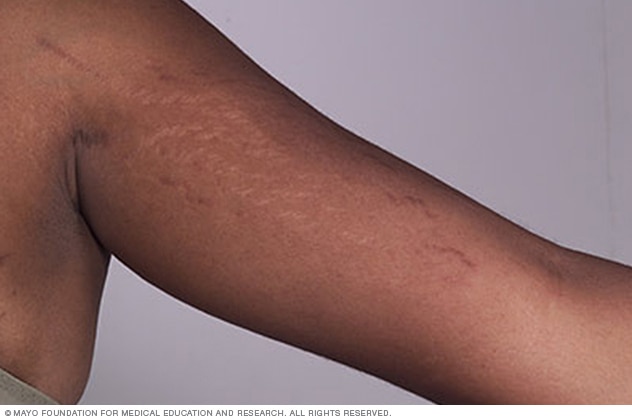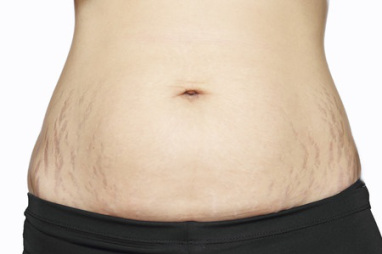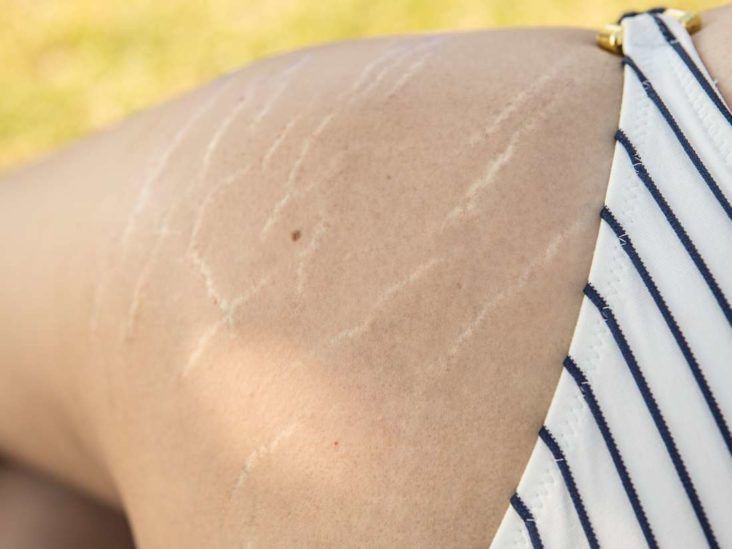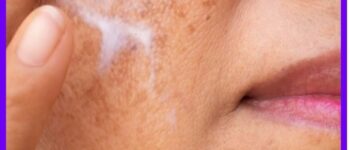Stretch marks are a common skin concern that affects people of all ages. However, it is often associated with pregnancy or weight gain. What many people don’t realize is that teenagers can also develop stretch marks. This can be a source of insecurity and discomfort for many teenagers, especially during a time when they are already dealing with changes in their bodies. In this blog post, we will discuss the causes, prevention, and treatment of stretch marks in teenagers.
Is It Normal For Teens To Get Stretch Marks?

Stretch marks, also known as striae, are long, narrow streaks or lines that develop on the skin. They can appear in different colors, such as red, purple, or white, and can vary in size and shape. While they are most commonly associated with pregnancy and weight gain, they can also occur in teenagers.
According to a study published in the Journal of the American Academy of Dermatology, about 70% of adolescent girls and 40% of adolescent boys develop stretch marks during puberty. This means that it is normal for teenagers to get stretch marks, and they should not feel ashamed or embarrassed about them.
Symptoms Of Stretch Marks In Teenagers
Stretch marks can appear on various parts of the body, including the abdomen, thighs, hips, breasts, and arms. They usually start as raised pink or red lines and eventually fade into white or silver-colored scars. Some teenagers may experience itching or burning sensations in the affected areas.
Apart from the physical symptoms, stretch marks can also have a significant impact on a teenager’s mental health. Many teenagers may feel self-conscious and avoid wearing certain clothing or participating in activities that expose their stretch marks. This can lead to low self-esteem and body image issues.
How Do Stretch Marks Develop In Teenagers?

Stretch marks develop when the skin is stretched beyond its capacity, causing the collagen and elastin fibers to tear. This can happen during periods of rapid growth, such as puberty, when the body goes through significant changes. The sudden stretching of the skin causes the blood vessels to break, resulting in the red or purple color of stretch marks.
There are also other factors that can contribute to the development of stretch marks in teenagers, including genetics, hormonal changes, and certain medical conditions. For example, if a teenager has a family history of stretch marks, they are more likely to develop them. Hormonal changes during puberty can also affect the production of collagen and elastin, making the skin more prone to stretch marks.
How To Prevent And Treat Stretch Marks In Teenagers
While it may not be possible to completely prevent stretch marks, there are steps that teenagers can take to reduce their appearance and prevent new ones from forming.
Prevention Tips
- Maintain a healthy weight: Rapid weight gain or loss can cause the skin to stretch and lead to stretch marks. Encourage your teenager to maintain a healthy weight by following a balanced diet and staying physically active.
- Stay hydrated: Drinking plenty of water can improve skin elasticity and keep it hydrated, making it less prone to stretch marks.
- Moisturize regularly: Keeping the skin moisturized can help improve its elasticity and prevent stretch marks. Look for moisturizers that contain ingredients like cocoa butter, shea butter, or vitamin E.
- Eat a nutrient-rich diet: A diet rich in vitamins A, C, and E, as well as zinc and silica, can help improve skin health and prevent stretch marks. Encourage your teenager to include foods like fruits, vegetables, whole grains, and lean proteins in their diet.
- Avoid crash diets: Crash diets can cause rapid weight loss, which can lead to stretch marks. Instead, encourage your teenager to adopt healthy eating habits and make gradual changes to their diet.
Medical Treatment Options
If your teenager already has stretch marks, there are medical treatments that can help reduce their appearance.
- Topical creams: There are various creams and lotions available over-the-counter that claim to reduce the appearance of stretch marks. These products usually contain ingredients like retinoids, hyaluronic acid, or glycolic acid, which can improve skin elasticity and promote collagen production.
- Laser therapy: Laser therapy is a non-invasive treatment that uses focused light to stimulate collagen production and improve the appearance of stretch marks. It may require multiple sessions to see significant results.
- Microdermabrasion: This treatment involves using a device to exfoliate the top layer of the skin, promoting new skin growth and reducing the appearance of stretch marks.
- Chemical peels: Chemical peels involve applying a chemical solution to the skin, causing it to peel off and reveal new skin underneath. This can help reduce the appearance of stretch marks.
Frequently Asked Questions

1. Can stretch marks be prevented completely?
While it may not be possible to prevent stretch marks completely, following a healthy lifestyle and taking care of your skin can reduce their appearance and prevent new ones from forming.
2. Do stretch marks go away on their own?
Stretch marks do not go away on their own, but they may fade over time and become less noticeable.
3. Can teenagers use the same treatments as adults for stretch marks?
Yes, teenagers can use the same treatments as adults for stretch marks. However, it is essential to consult a dermatologist before trying any medical treatment.
4. Are there any natural remedies for stretch marks?
Some people claim that natural remedies like coconut oil, aloe vera, and almond oil can help reduce the appearance of stretch marks. While these remedies may provide some relief, there is no scientific evidence to support their effectiveness.
Conclusion

Stretch marks are a common skin concern that can affect teenagers during puberty. While they may cause insecurity and discomfort, it is essential to remember that they are a normal part of growing up. By following a healthy lifestyle and taking care of their skin, teenagers can reduce the appearance of stretch marks and feel more confident in their bodies. If stretch marks are causing significant distress, it is best to consult a dermatologist for appropriate treatment options. Remember, stretch marks do not define you, and you should embrace your body in all its forms.




Leave a Reply